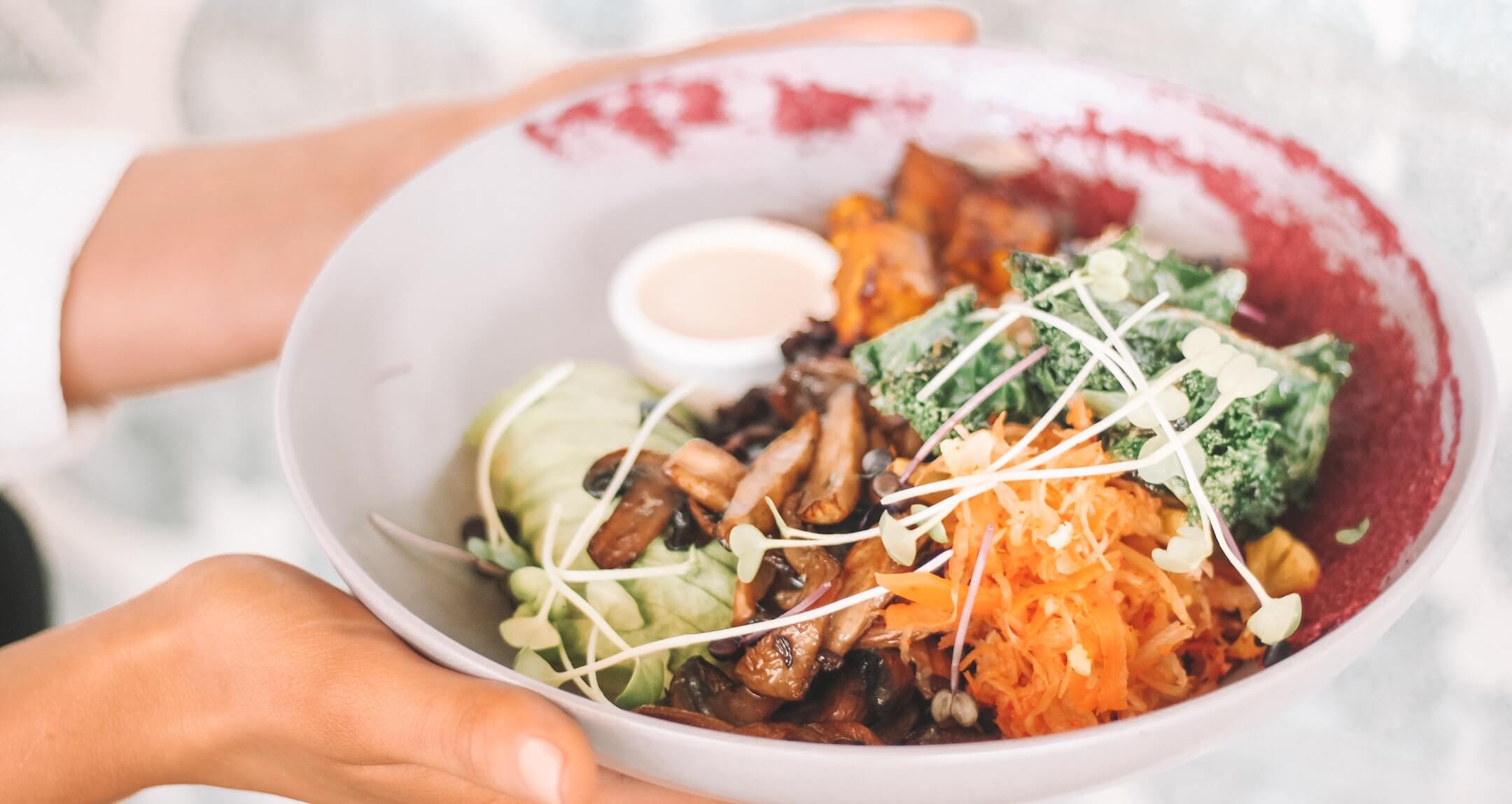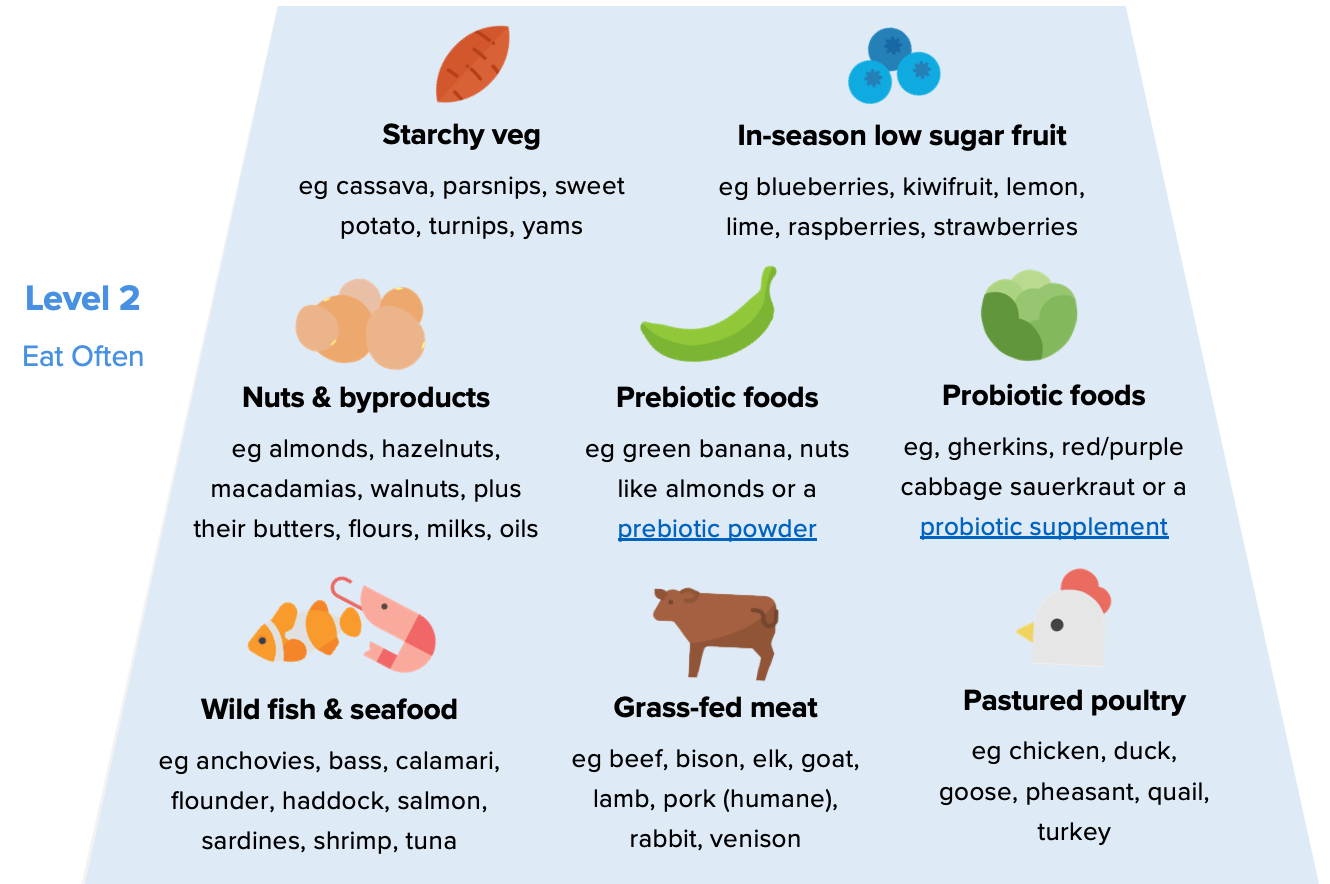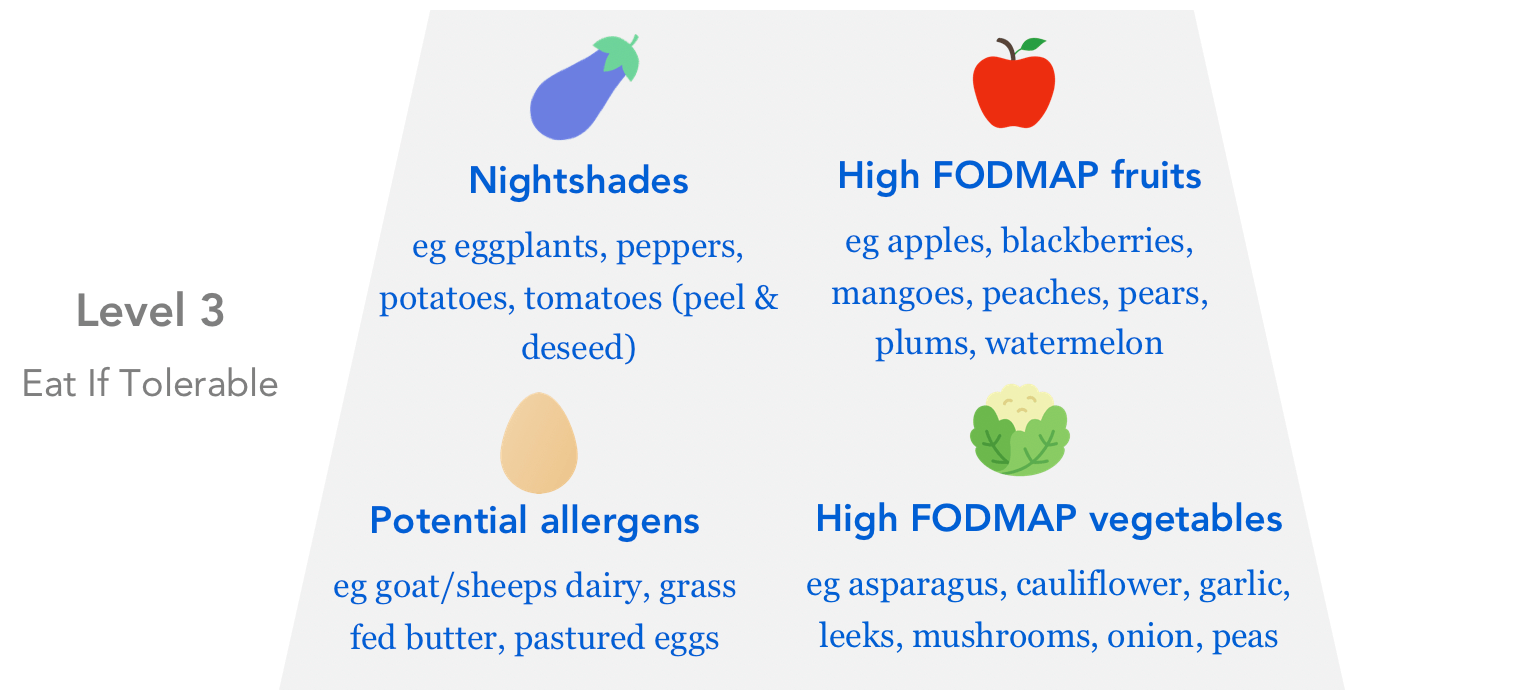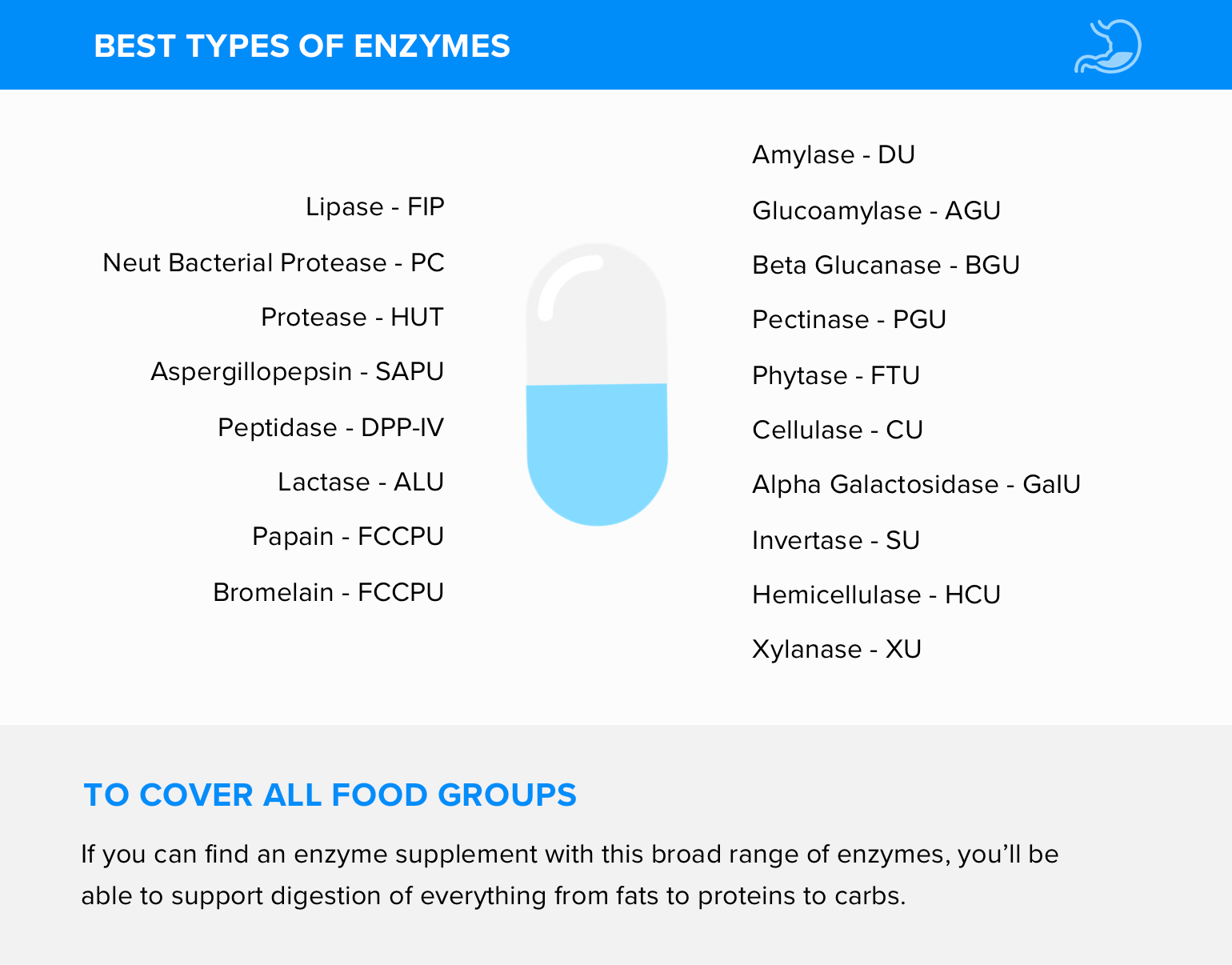There is so much conflicting advice out there on what we should and shouldn’t be eating to support our gut health – and recover from leaky gut. No more! Because in this ultimate guide to the leaky gut diet, we’ll pinpoint every YES food. Let’s go!
Last Updated: Oct 1, 2023

In this guide, you’ll discover…
You’ve probably spent hours Googling around trying to work out what foods to eat (and avoid) for leaky gut.
And yet, it can still feel so confusing! Which makes sense, since no one has summarized the leaky gut diet onto one page.
Instead, doctors, bloggers and health sites, prefer to bombard you with…
- Short (and useless) posts, like “8 foods to eat for leaky gut”
- 400 page books that leave you more confused than when you started (who needs to read 20 pages about nightshade vegetables?!)
- 10-page shopping lists of weird foods you’ve never heard of and have zero chance of finding in your local supermarket (hello konjac root my strange fibrous friend)
The problem is that you then end up feeling extremely overwhelmed (and may end up giving up on the whole thing).
And if you’re crazy enough to soldier on, you might end up running into lots of conflicting food advice (which may be even worse!).
Well, don’t worry, because I’ve simplified it all for you. And now you can find the ultimate leaky gut diet food list on one page!
I’ve spent a looooot of time working on this for you. You could’ve fermented a King’s ransom of sauerkraut in the time it’s taken me to make this.
But it’s been oh so worth it, because I think this is THE easiest way to understand the diet in just a matter of minutes.
Now, let’s take a look at the 4 different levels
- Level 1 – this is where you’ll find the 3 main types of food that you can eat like crazy. They are so healthy that there’s (almost) no need to count calories!
- Level 2 – here you’ll see the 8 groups of food that you can eat often (eg 1-3 times a week each). You’ll find some of the tastiest foods included here, which hopefully makes this diet much easier to stick to.
- Level 3 & 4 – this is where you’ll discover 5 more types of food, which you can eat occasionally IF you can tolerate them. Further below, I’ll talk about how to test yourself to see if you can handle them.
To make sure this food poster is super handy for you, I will now go through each level in detail, including telling you exactly how much to eat of each level. This portion control can make a huge difference.
Side note – some of the foods fit into multiple categories. For example, avocado could be in 3 different categories. And so I’ve placed foods wherever they make the most sense.
And for a few foods, I’ve added them to more than one category (they’re special!).
Level 1 foods – eat like a mini Michelin man
Say hello to our best friends! Gut-friendly vegetables and healthy fats.
The big idea here is to use our vegetables as a delivery vehicle for our fats.
Eg a mixed salad slathered in extra virgin olive oil or roasted broccoli finished with MCT oils and chopped walnuts.

- Non-starchy vegetables – eg broccoli, choy sum, cucumber*, green beans, radishes – *Peel & deseed
- Leafy greens – eg arugula, chard, collard greens, kale, lettuce (all types), spinach, watercress
- Healthy fats – eg coconut oil, extra virgin olive oil, fish oil, macadamia oil, MCT oil
Typically, this group of foods will be 50% of our daily calories.
Level 2 foods – enjoy often (and welcome to Flavortown!)
These foods are delicious and nutritious (with the healthiest foods being fish/seafood, meat and poultry).
The range of flavors and textures available here should hopefully make sticking to the leaky gut diet easy – or as easy as can be.

- Wild fish & seafood – eg anchovies, bass, calamari, flounder, haddock, herring, salmon, sardines, shrimp, tuna
- Grass-fed meat – eg beef, bison, elk, goat, lamb, pork (humane), rabbit, venison
- Pastured poultry – eg chicken, duck, goose, pheasant, quail, turkey
- Nuts & byproducts – eg almonds, hazelnuts, macadamias, walnuts, plus their butters, flours, milks, oils
- Prebiotic foods – eg green banana/plantain, nuts or a prebiotic powder
- Probiotic foods – eg, gherkins, red sauerkraut or a probiotic supplement
- Starchy veg – eg cassava, parsnips, sweet potato, turnips, yams
- In-season low sugar fruit – eg blueberries, kiwifruit, lemon, lime, raspberries, strawberries
Some quick tips on eating level 2 foods
- Clean protein – the quality matters, a lot. So try to opt for wild caught, pastured, grass fed etc. And limit it to 5 ounces (~140g) per serve, which is healthier and more affordable.
- Probiotic and prebiotic foods – start small and work up to larger serving sizes over time (especially with prebiotics!). And if you find these foods hard to eat often, try a probiotic supplement and prebiotic powder.
- Nuts, fruits & starchy veg – eat them often, but in small serving sizes. Eg 7-8 nuts, 10-12 berries, ½ a sweet potato. And if any of them don’t sit well for you, ditch ‘em!
Typically, this group of foods will be 40% of our daily calories.
Level 3 foods – fine IF you can tolerate them
Most of these foods are fairly healthy (with the most gut-friendly being the potential allergens and FODMAP veg).
But certain people simply can’t tolerate some of these foods, eg people with autoimmune conditions.
So work with a registered dietitian and do an elimination/reintroduction diet to determine which foods you personally can handle.

- Potential allergens – eg goat/sheeps dairy, grass fed butter, pastured eggs
- High FODMAP vegetables – eg asparagus, cauliflower, garlic, leeks, mushrooms, onion, peas
- Nightshades – eg eggplants, peppers, potatoes, tomatoes (peel & deseed)
- High FODMAP fruits – eg apples, blackberries, mangoes, peaches, pears, plums, watermelon
Typically, this group of foods will be 10% of our daily calories.
Level 4 foods – eat small serves occasionally
So they may be OK to eat monthly, in small quantities, but only once your gut is better and you have tested each of them (like level 3 foods).

- Borderliners – eg beans, chickpeas, lentils, oats, quinoa, rice
There are some cooking techniques you can use as well to reduce their gut irritating potential. eg pressure cooking (a fantastic way to reduce irritants like lectins).
Keeping things simple
As you can see above, I’ve pinpointed all the categories of YES foods, and a few categories of MAYBE foods.
Then I’ve given you examples of my favorite foods for each category.
ie instead of drowning you in dozens of different options for each category, I’m just showing you my favorites. My go tos!
As I’ve trialed 100s of different foods in my time for taste and ease of buying/cooking, this shortlist is super helpful.
For example, in the leafy greens category, you’ll see arugula is in, whilst dandelion greens sure as heck aren’t! We ain’t looking to make a witches brew of greens after all.
On the flip side, I’ve avoided including any NO foods, like wheat, soy, cow’s dairy etc. Making it super easy to follow.
Best of all, I’ve structured the diet as a pyramid, so you can see which food groups we should be devouring like a mini gastrointestinally-minded Michelin man, and which ones we should be eating less frequently.
This prioritization of foods will be a game changer for you!
With over 100 hours of new research, this is THE most accurate leaky gut diet list
I really wanted to make sure this pyramid is accurate and fits us leaky gutters like a glove.
So I spent a lot of time with the team finding important subtleties in the existing dietary framework.
For example, prebiotic foods are in level 2 of the pyramid. They’re (overall) great! But some may not be.
eg prebiotic foods like asparagus are high in FODMAPs and thus may not play well for many of us with temporary or ongoing FODMAP tolerance issues.
So to make the prebiotic food category really helpful, I’ve only included low FODMAP prebiotic foods as examples.
These subtle nuances can make all the difference in helping your gut heal.
Another example of all the new research that’s gone into this food pyramid…probiotic foods.
You’ll see they’re a foundation of the diet. But once again, not all probiotic foods are created equal. In fact, within specific probiotic foods – eg sauerkraut – there are differences worth distinguishing.
For example, red cabbage based sauerkraut is significantly lower in FODMAPs than white cabbage sauerkraut. As a result, red sauerkraut makes the list of examples, not white sauerkraut.
Throughout the pyramid I’m trying to simultaneously simplify and optimize the leaky gut diet for you.
Attention to detail matters. And I hope you love it.
Although most of the foods are super healthy and gut friendly, they can still take a bit of work to digest.
e.g. a simple mouthful of avocado needs to be broken down (digested) into its 18 different amino acids, as well as omega-3 and 6 fatty acids, and fiber.
Properly digesting these foods is super important, because…
- It will help our bodies extract all the goodness from the healthy foods we eat (like vitamins, minerals, amino acids etc), which helps our gut to repair.
- It means we can reduce the number of large undigested food particles that make their way down to our intestinal tract. Which in turn means fewer particles bombarding our fragile lining / gut wall or feeding any bad bacteria further down.
Apart from chewing our food more (ie 25-30 chews per mouthful), the easiest way to digest the 16 food groups better is by increasing the presence of enzymes – the hard workers that break down our food.
Say hello to digestive enzymes – a gut’s best friend!
Digestive enzymes are amazing, but the key is knowing which enzymes you need in a supplement, since different enzymes help with different foods. So let’s run through that now.

Enzymes for healthy fats
- Lipase is the main enzyme that can help us break down the healthy fats we eat on the leaky gut diet. From extra virgin olive oil to avocados to tasty macadamia nuts, lipase makes turning fats into fatty acids and glycerol much easier. Can help with weight management too.
Enzymes for vegetables
- Amylase can help break down the starches (complex carbs) in our vegetables (eg sweet potato) into simple/soluble sugars. An absolute digestive angel.
- Cellulase, Hemicellulase and Xylanase can help us unlock key nutrients from vegetables, as well as fruits, by breaking down the fiber in them, eg cellulose.
- Alpha-Galactosidase can help with cruciferous veg (eg broccoli), as well as other carbs (eg legumes), meaning less bloating and gas! One of my favorites, especially since I no longer have to blame poor puppy Mr McShmoogles for ye olde flatulence!
Enzymes for our clean protein
- A blend of alkaline, neutral and acid stable Protease enzymes (as well as Papain and Bromelain) can help us break down the protein in fish, chicken, meat, nuts and eggs, into peptides and amino acids. A big win with better protein break down is less bloating. Food baby be gone!
Enzymes for the harder-to-digest foods
- Lactase enzymes can help break down lactose (milk sugar in dairy) into glucose and galactose. Sheeps/goats dairy just got a whole lot better!
- Glucoamylase can help break down maltose/malt sugar in any grains we eat. Whilst Beta-Glucanase can help with a special type of fiber in grains. Making them a great duo when we’re eating foods towards the top of the pyramid.
- Pectinase supports break down of pectin, a troublesome carb found in fruits.
You can now get all of these enzymes in one supplement (this one)
Say hello to these digestive enzymes. It contains 18 enzymes in every capsule, including every enzyme above. Meaning, you’ll enjoy support no matter what you’re eating.
Best of all, it is 3rd party certified gluten free, dairy free and soy free. Making it a true digestive hero we can count on!
If you haven’t tried it yet, you can buy it here on Amazon (currently USA only).
1) Print off the food pyramid above
After you print it out, take your 3 year old nephew Timmy O’Toole’s mediocre finger painting off the fridge and stick this up instead.
This pyramid is much more important, because it will not only serve as your daily reminder, but it will also act like a guest list at a club…only foods on the list get into your fridge!
2) Shop your favorite foods from Levels 1 & 2
Pick your favorites and stock up on them. Think loads of green veggies, olive oil, fish etc.
By having them at home, you’ll be 10x more likely to eat well this coming week.
Obviously, anything not in the pyramid, eg unhealthy vegetable oils, refined carbohydrates, soy products etc, should be thrown out.
3) Ignore foods from Levels 3 & 4 for 30 days
I know it can be tough to temporarily say goodbye to these foods, but it is worth it, as you’ll soon be able to workout which ones you really can eat, and which ones you’ll have to resign to the gastronomic dustbin of history.
There’s no better way to uncover hidden triggers and feel better.
4) Then test foods from Levels 3 & 4
Once the 30 days are up, start reintroducing one food at a time from levels 3 & 4 and in small amounts, eg half an apple, not a full one.
I personally add one new food every 3 days, as that gives me enough time to see if there are any delayed symptoms.
Bring the foods that don’t cause a reaction back into your normal diet and ditch the ones that still don’t play well.
5) Use enzymes to make foods easier to digest
As you saw above, enzymes can help us digest foods from all 4 levels – including the trickier ones like complex carbs, pectin-filled-fruits & FODMAP foods.
Since different foods require different enzymes, it is important to look for an enzyme supplement with a very wide range of enzymes, like this one.
So there you go!
The leaky gut diet, finally made simple.

